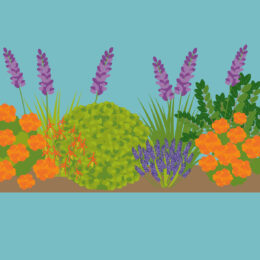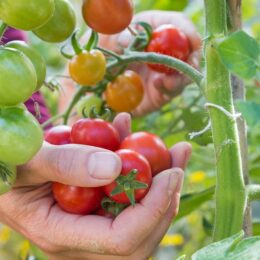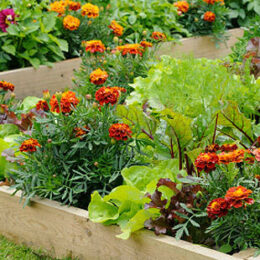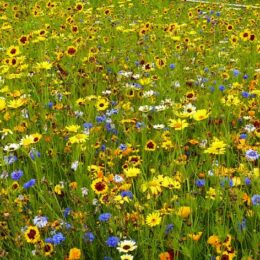During a hot dry spell, plants will need watering daily, particularly if they are in pots, baskets or a sunny border. Bear in mind that wind also drys the soil out very quickly. Water generously, it is surprising how much water is needed to reach the roots. If you are confused about what and when to water, read our top tips.
Please bare in mind our Hardy Plant Guarantee does not cover plants that have dried out due to weather conditions.

GAP Photo 2018
Perrywood’s top tips on how to water your plants
- Plants especially if newly planted this year or in pots need more water than you might think.
- Try to water in the evening or the very early morning when it is much cooler meaning that less water is lost to evaporation straight away.
- It is important to pick the right time to water, as it’s better to water the soil before drought sets in. A good indication is to dig into the soil at a spades depth. If the soil feels dry then watering is probably required for some plants.
- If the soil is very dry and plants are showing signs of wilting then drought has already set in, water the area profusely making sure all plants receive a thorough watering and keep watering regularly.
- Cutting back a plant’s foliage can reduce its need for water. So if a plant looks like it is struggling you could cut a third of the leaves back to help it out.
- Use a watering can for pots and containers or hose with a trigger gun attachment for watering larger beds and borders. A waterbutt is an economical and environmentally friendly water resource especially in times of drought- although there are times when the waterbutt runs dry. Wherever possible save grey water from the house.
- Applying a mulch of organic matter over soil will supply your plants with additional nutrients and help with water retention. Using a water storing gel when planting will help retain water around the roots, this is particularly useful in hanging baskets or small containers.
Which plants you need to water
- Established trees and shrubs – rarely need watering as they will have developed a good root system making them drought proof. However, watering during dry periods should improve their growth. Trees and shrubs planted less than 5 years ago will not yet have such an advanced root system so will need more regular watering.

Photo by Daniel Jones Photography
- Newly planted areas – should have top priority as they will be very vulnerable to water stress. Any planted this year will rely on being watered regularly for survival, their root system will not be established enough to reach the water table.
- Herbaceous perennials – to keep flowering plants at their most productive frequent watering is required. It is a good idea to choose drought resistant plants.

Dahlia – Lemon Sherbet
- Pots, Containers and Baskets – all plants not directly in the ground will need constant watering throughout the year. During hot, dry periods, often up to twice a day. Try not to let containers dry out completely, keep pots in a shadier position and use trays or saucers to retain much needed moisture.

Perrywood Hanging Baskets
- Vegetable plots – to achieve the best yield, watering is important to make sure the crops are not affected by drought stress. Leafy crops such as lettuce must never be short of water, whereas onions require little or no watering. Most other crops need watering during sowing, transplanting and as the fruits, roots or tubers are developing.
- Lawns – during droughts it would take a vast amount of water to keep a lawn in top condition so rather than wasting valuable resources we suggest mowing on a higher setting and less frequently. A lawn will soon recover once there’s been some rain.
When and how often you need to water the garden depends largely on the soil type
- A clay soil – typical to our local area, needs watering less regularly because it drains very slowly but needs a heavy application of water because the soil holds a lot of water within its structure. Be aware that this soil type may still feel damp even when beginning to dry out
- A sandy soil – requires more regular watering as it drains and dries our very quickly. A little and often approach is best
- A loam soil – if you are lucky enough to have a loam soil, less water is required because water will drain well and dry out at a moderate rate
If you’d like some tips on saving water with a water butt read our ‘How to‘
Hozelock also has an article about saving water in the garden including informative top tips on how to use their products to ‘water wisely’.








